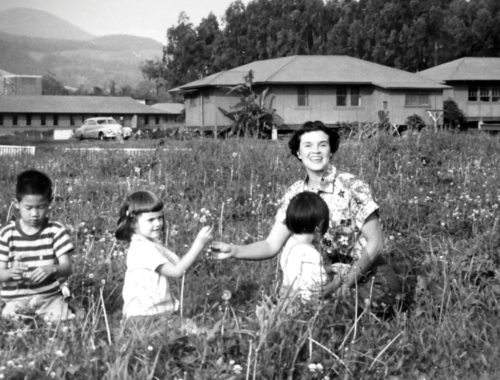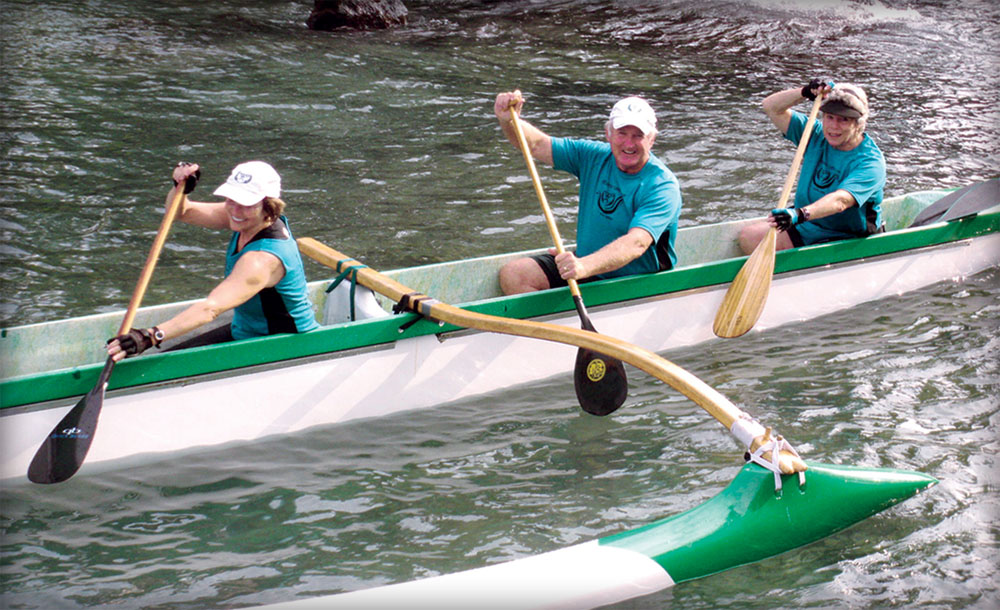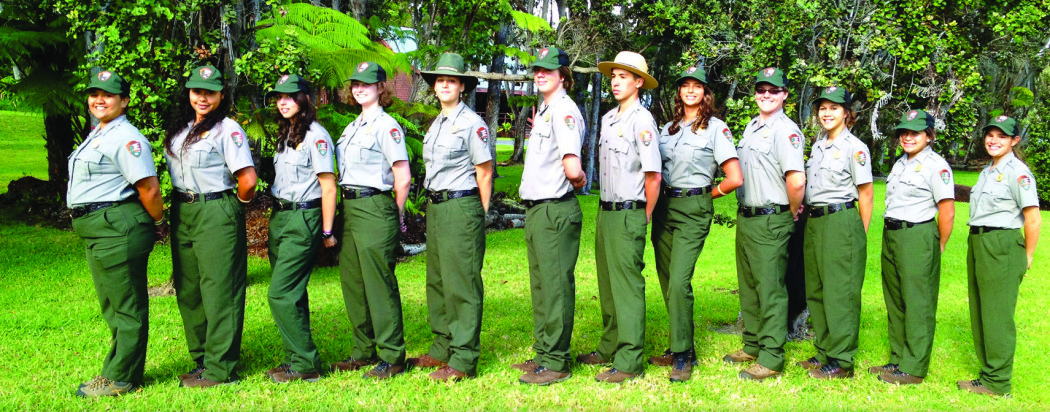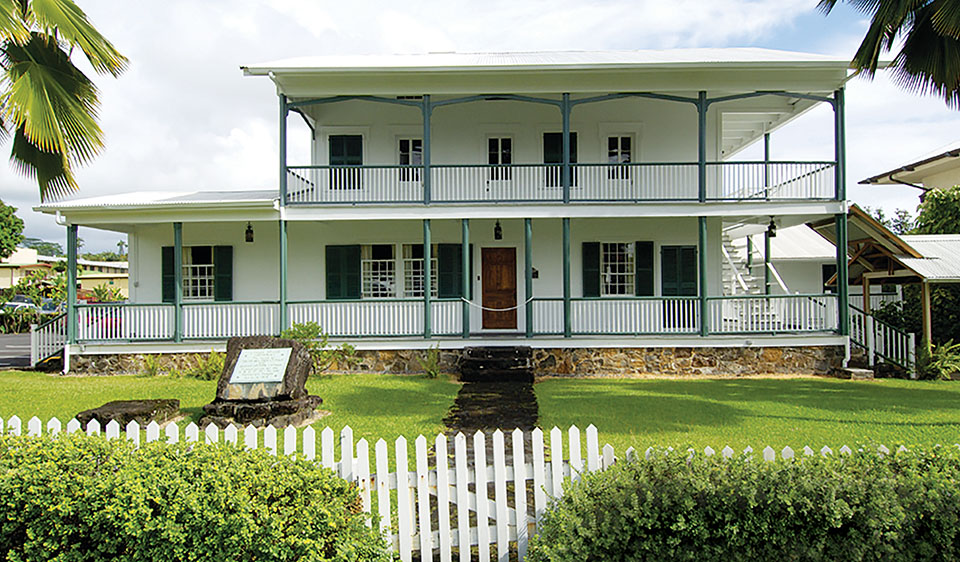
What Withstands the Test of Time? The Lyman Mission House

By Le‘a Gleason
Imagine sailing for six months, leaving the cool Atlantic Ocean, and passing into the breezy Pacific Ocean to land in a foreign place. The rain soaks the thatched roof of your new home creating an ever-present dampness that warms to a heavy humidity with the beating sun. Here, there is no running water or electricity. Everyone speaks a different language. Letters home receive response nearly a year later.

It might seem like life in Hilo in the early nineteenth-century was tragically difficult for missionaries David and Sarah Lyman and their seven children, and in fact theirs is a story of inspiration, resilience, and growth.
Less than three weeks after they were wed, Reverend David and his wife Sarah boarded a ship and left New England on a mission to share the gospel with the Hawaiian people. They landed in Hilo in 1832 and over time became prominent community figures. They never returned home, as they would live to grow deep roots here in Hilo.
The two originally resided in a stone hale (house) with a thatched roof until they moved into an improved stone hale with interior doors and glass windows. Later they moved into what would become their permanent home which was built in 1839 close to where it now stands on Haili Street.
At the time, however, the home faced the ocean and was located down a footpath just off of what was then Church Street. The home featured the square-shaped lumber used in western-style homes but continued to use the traditional thatched roof style, for which Sarah suffered many health issues. To her relief, it was replaced with a new zinc roof, and four upstairs rooms were added in 1856.
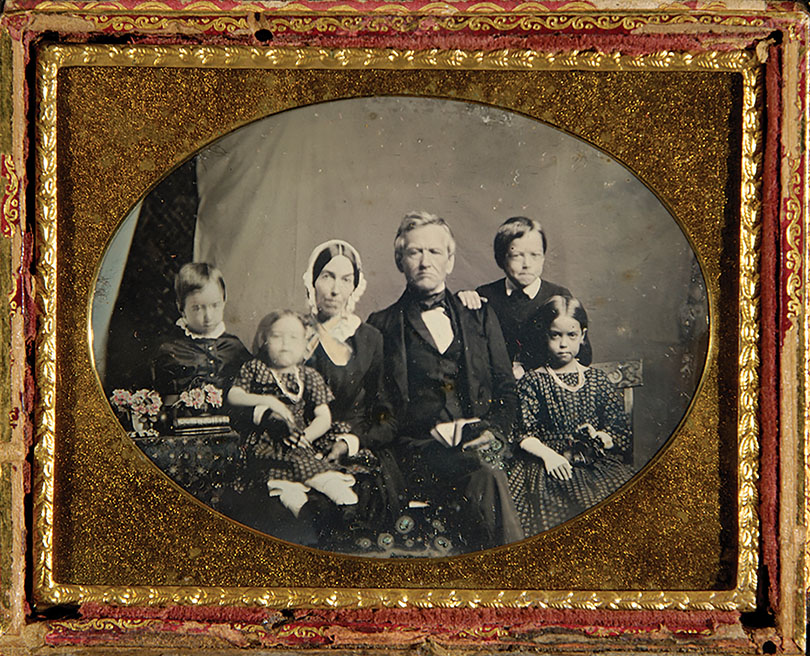
David and Sarah raised seven children in the home and worked to establish a system of education in the community. They believed that if people could read, they could read the bible and learn the gospel. David was instrumental in creating the Hilo Boarding School and served as the principal. Sarah taught there, homeschooled their children, and led sewing circles. Both were passionate about teaching the native children in Hawaiian and did so until they were commanded not to.
Much of what’s known of the Lyman’s history is through Sarah’s letters and detailed journal entries, as the missionaries were required to keep journals.
In the late 1920s, a land company was building a new subdivision on Halai Hill and wanted to demolish the home and build a road where it stood. The youngest Lyman child, Emma, then 80 years old, bought the house back from the land trust that owned it and had it moved on large logs to the place it now stands.

If history could talk, Emma Lyman must have known something was special about her childhood home when she fought to save it, for today what is simply called the “Mission House” represents so much more than that. In itself the home is a registered artifact as well as a registered historical site. It is the oldest frame structure on Hawai‘i Island and represents a time in history when Hilo was experiencing growth, political change, and a new blending of cultures from abroad.
In 1931, the Lyman’s home became the Lyman Museum. The second floor was to become the museum and the Hilo Women’s Club. Walls were knocked out to create the club downstairs, but when the deal fell through, the entire house became the first museum on Hawai‘i Island.
In 1972, a modern museum building was constructed next door, and finally, in 1981, the Mission House opened up for tours, offering a little piece of living history to visitors. In the years since the official Lyman Museum building has existed, the Mission house has had room to grow into its own special display of history.
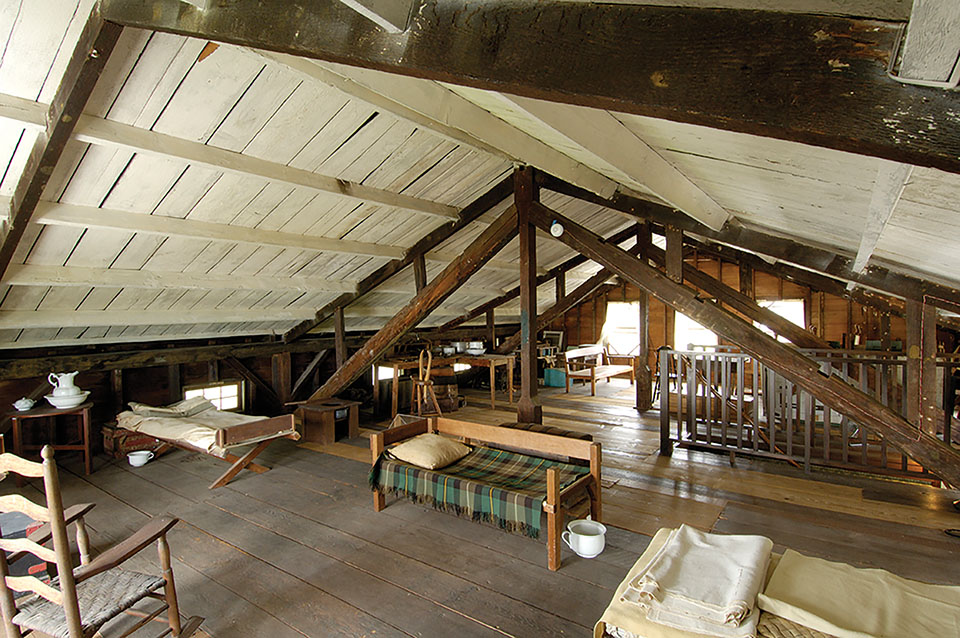
Caring for a home that has been through such an evolution is no small feat. In 1996, Jill Maruyama became curator of the Mission House and has worked tirelessly since the project began in 2001 to restore it to its original condition. In the nineteen-thirties renovations were made to the house and although they too were old by modern standards, Jill has focused on returning the house back to its original date.
“It’s a responsibility and an honor for me to be able to take care of the house. What goes into the house—we’ve done a restoration not only physically but interior wise—what type of wallpaper we put in, furniture—we try to get it back to the time period of their residency,” Jill says.
Jill explains that she and her staff try to do the interior decorating as much as possible the way Sarah would have done things. Not many pieces of furniture remain that were theirs, yet those in the house were built in the same time period.
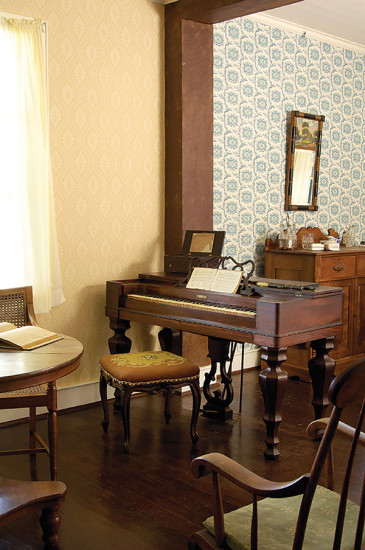 Through the journals, it is evident that although the home is large, the interior was not ornate. It was furnished with simple koa furniture. Pictures of Jesus adorned the walls.
Through the journals, it is evident that although the home is large, the interior was not ornate. It was furnished with simple koa furniture. Pictures of Jesus adorned the walls.
And through those same journals, Jill says she finds a connection with Sarah and the ways in which she grew throughout her time living in Hilo.
“Reading Sarah’s journal did make an impact on me. Seeing how the community and the people impacted and changed her—she softened in many ways. Some of the missionaries did go back, but the Lymans lived out their lives here so they really planted roots. They were very grounded here. Father and Mother Lyman, as they were called by the students, were very respected in the community,” she says.
In that same spirit of respect, not only has Jill worked to restore the interior of the house, but also to complete a project that was a dream from the time she first became curator.
In 1845, a wing was added to the home as Reverend Lyman’s study and barter room. In 1931 when the house became a museum, the room was converted into an apartment for the then-curator. Restoring what she calls “the annex” has added a sense of completion to the house for Jill.
“I worked with historic architect Spencer Leineweber in Honolulu, and she’s helped us tremendously. She wrote a Historic Structures Report, which is a total guideline for the house: windows, walls, the wood, anything you could think of, how it was constructed. So we followed that. She did some investigation, looked at how it was built, and we started putting it back together the way it should have been,” Jill says.
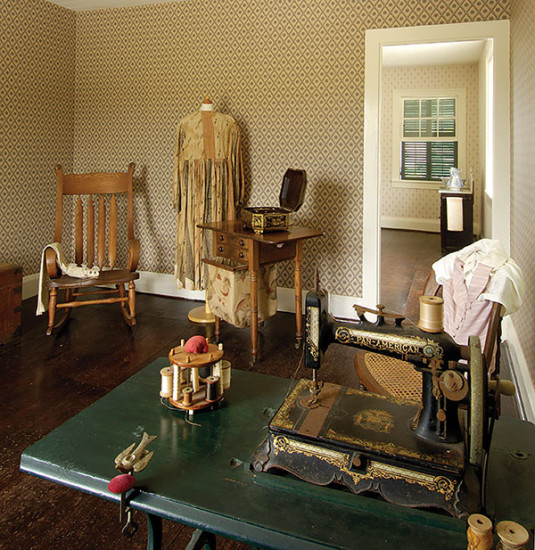
In 2010, the renovation was completed, and the annex is now a part of the public tour of the house. Several times a week, trained docents guide the groups through the home, painting a rich history of what it might have been like to live there. Among them is Lyman Museum Publicity and Marketing Coordinator, Rachel Pierson.
“I think it’s so interesting that it’s [the house is] an actual artifact—part of the collection. Being able to tell [their] story and tell it well is a unique opportunity. Luckily we have a house so we have a lot of room to do that. I think it’s a basic storytelling. In Hawaiian, the history is passed down orally, so it’s kind of a way to represent that,” she says.
Like Jill, Rachel is grateful for Sarah’s journal, too.
“One of the things her journal really helps do is add in the details. We know where the school was; we have these things [to] piece together the bigger story, but her journal adds the really personal touches—how she felt about things, what she thought,” she says.
Rachel adds, “One of the things that really interested me was it was feast or famine for them. Sometimes there was an abundance of food…and other times it was taro three times a day. Sarah writes about three different ways: roasted, toasted, and fried.”
The structure that stands today has quite literally withstood the test of time. In 1868, the mortise and tenon style in which the house is constructed (the same style that shipwrights use) allowed it to survive a massive earthquake.
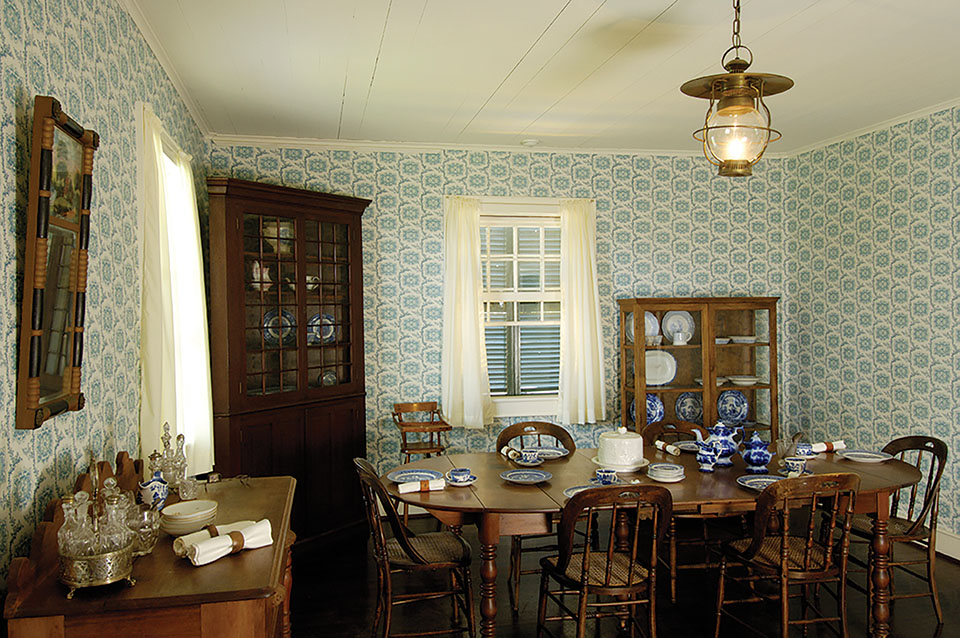 To restore an artifact to its finest condition and offer a learning opportunity to the community is just another way of giving back, Jill says. Because the Lymans gave a lot.
To restore an artifact to its finest condition and offer a learning opportunity to the community is just another way of giving back, Jill says. Because the Lymans gave a lot.
“I think they brought—they gave into the community—education, their religious beliefs, sewing circles; whatever it was, they came to give, not take. All the land he got for the school was given to him through the Hawaiian kingdom. They weren’t takers as many of the missionaries are looked upon. [Based upon] the research I’ve done on Sarah and David I can strongly say they came here to give, and they really did care for people,” she says.
The Mission House isn’t just a place on a hill. It’s a place for the community to learn about its roots.
“The word I think of is stewardship, and ownership. Even though we do the physical work in taking care of the place, hopefully the community feels some responsibility or connection to it. We hope they feel it’s their museum, whatever their nationality or ethnic group. Our mission is to tell the story of Hawai‘i, its islands, and its people,” Jill says.
And Hilo’s Lyman Mission House is certainly a part of that history. ❖
All photos courtesy of The Lyman Museum
Contact Lyman Museum: LymanMuseum.org
Contact writer Le‘a Gleason: lgfreelancehawaii@gmail.com
